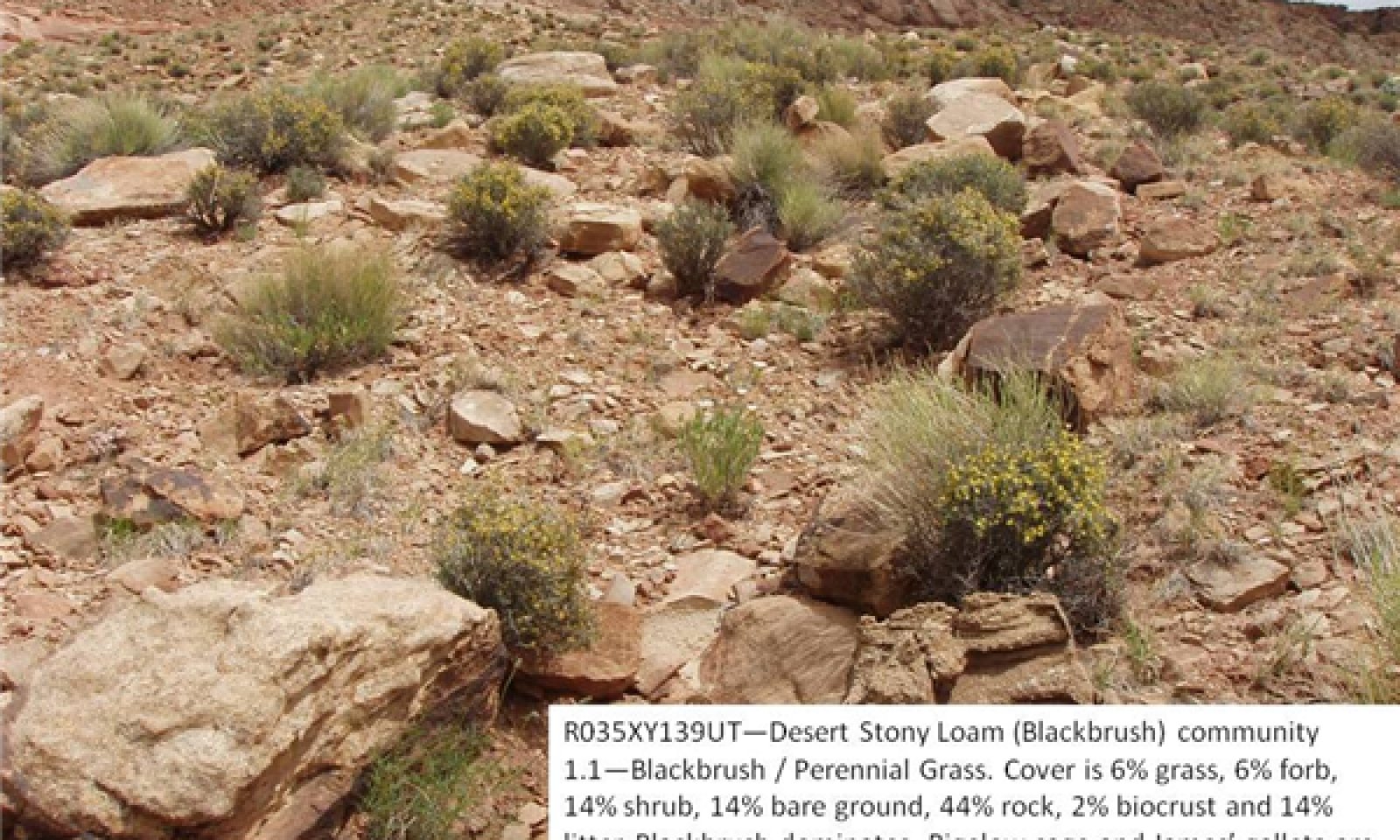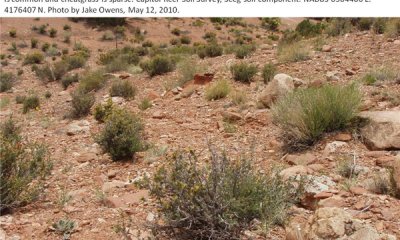
Desert Stony Loam (Blackbrush)
Scenario model
Current ecosystem state
Select a state
Management practices/drivers
Select a transition or restoration pathway
- Transition T1 More details
-
No transition or restoration pathway between the selected states has been described
Target ecosystem state
Select a state
Description
The reference state is dominated by blackbrush, with perennial grasses present during wet periods and absent during prolonged drought. Fire is not expected to be an ecological driver in the reference state due to incontinuous fuels and the general fire-resistence of blackbrush communities. This state is susceptible to invasion by non-native invasive species, particularly cheatgrass, red brome, and Russian thistle. Once these species establish, a return to the reference state is not likely.
Submodel
Description
The invaded state is similar to the reference state in plant community structure and function, however the presencs of invasive species decreases the resistance and resillience of the site to further degradataion. Due to lack of disturbed areas, the community responses to such disturbances are not documented, and are not currently included in the state and transition model.
This state is generally dominated by blackbrush. Primary disturbance mechanisms include climate fluctuations, native herbivore grazing, domestic livestock grazing, and surface disturbances such as road and pipeline development and off road vehicle (OHV) use.
Submodel
Mechanism
This transition occurs with the establishment of non-native invasive species. Disturbances that promote this transition include season long continuous grazing of perennial grasses, prolonged drought, recreation or other surface disturbances. However, invasive species such as Russian thistle can invade intact perennial plant communities with little to no disturbance. Once invasive plants are found in the plant community, a return to the reference state is not likely.
Model keys
Briefcase
Add ecological sites and Major Land Resource Areas to your briefcase by clicking on the briefcase (![]() ) icon wherever it occurs. Drag and drop items to reorder. Cookies are used to store briefcase items between browsing sessions. Because of this, the number of items that can be added to your briefcase is limited, and briefcase items added on one device and browser cannot be accessed from another device or browser. Users who do not wish to place cookies on their devices should not use the briefcase tool. Briefcase cookies serve no other purpose than described here and are deleted whenever browsing history is cleared.
) icon wherever it occurs. Drag and drop items to reorder. Cookies are used to store briefcase items between browsing sessions. Because of this, the number of items that can be added to your briefcase is limited, and briefcase items added on one device and browser cannot be accessed from another device or browser. Users who do not wish to place cookies on their devices should not use the briefcase tool. Briefcase cookies serve no other purpose than described here and are deleted whenever browsing history is cleared.
Ecological sites
Major Land Resource Areas
The Ecosystem Dynamics Interpretive Tool is an information system framework developed by the USDA-ARS Jornada Experimental Range, USDA Natural Resources Conservation Service, and New Mexico State University.






